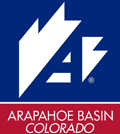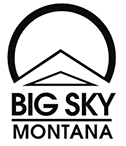Surviving the Pitfalls of Learning How to Ski
Everyone makes mistakes. That’s why we have erasers and divorce lawyers.
And many mistakes — whether through ignorance, ineptitude or just plain bad luck — can mean the difference between having a pleasant experience and a really awful, stinking day.
This is especially true in the skiing and snowboarding world, where missteps can sometimes lead to dire consequences.
And if you’re just starting out in the sport, whoa. Learning to ski or snowboard is tough enough without having negotiate the myriad of pitfalls than can catch the unwary.
Luckily, some of the more egregious mistakes can be avoided, and you can sail through your first days on the slopes relatively unscathed.
The following are five common ones made by many rookie skiers and snowboarders.
Clothing
There may be some retro coolness in hitting the hill wearing blues jeans and wool sweaters, but for a first-timer, who’s spending a lot of time falling down in the snow, those water-soaking pieces of apparel just won’t cut it.
Make sure you have a decent waterproof jacket and pants for your first excursion on the hill; you can find inexpensive options at your local sporting goods store.
Also, purchasing and wearing pair of ski/snowboard socks, not your cotton gym socks, will greatly help you out in having a pleasant first experience.
Gear
Many first-timers come to the sport with boots and boards borrowed from friends and/or family, and that’s just asking for trouble. Ill-fitting boots and too-long (or short) skis and boards won’t make the learning experience very pleasant.
Take the time to go to a ski shop and get properly fitted with gear, particularly boots, which is where you’ll find most of the on-hill turning takes place.
And don’t forget to wear those ski/snowboard socks when you’re getting fitted for the boots.
Fitness
Skiing and snowboarding are activities that require a bit of muscular and vascular endurance, and the muscles used in the sport are not often used in other athletic pursuits.
So, after establishing a solid aerobic foundation via running, cycling or whatever, get the core and leg muscles used in skiing/snowboarding tuned up by doing squats, lunges and hip flexors on a regular basis.
Having a regular ski-fitness program will greatly enhance your day on the hill and also has the added benefit of helping prevent injuries.
Lessons
Many first-time skiers and snowboarders have had the unfortunate experience of letting one their friends or family members be the one to give them an introductory lesson the hill, and most of them have been scarred for life.
Let the professionals take care of that. It’s well worth the money — which can be a bit steep — to have a qualified ski school instructor get you started in the right direction. Learning the proper technique from the get-go lays an excellent foundation for future progress.
Also, don’t rely on teaching yourself. For one thing, you’re hardly qualified, even if you’ve pored through all the teaching manuals and watched all the videos. For another, there’s no way you can identify and correct your mistakes.
Awareness
It’s common knowledge that doing something for the first time can be an overwhelming experience, with so much new input to process and retain.
The same goes for hitting the hill for the first time: There’s so much going on and people careening about all over the place that it can take most of your concentration just to sort out how you fit into all this.
The best place to start is to be aware of the rules of road and how not to physically interact with the people and objects that are part and parcel of the ski resort life.
The biggest mistake you can make is to think you are the only person on the hill.
Featured Resorts

Killington Resort

Pico Mountain

Mammoth Mountain

Palisades Tahoe

Arapahoe Basin

Aspen Snowmass

Sugarloaf

Sunday River

Big Sky

